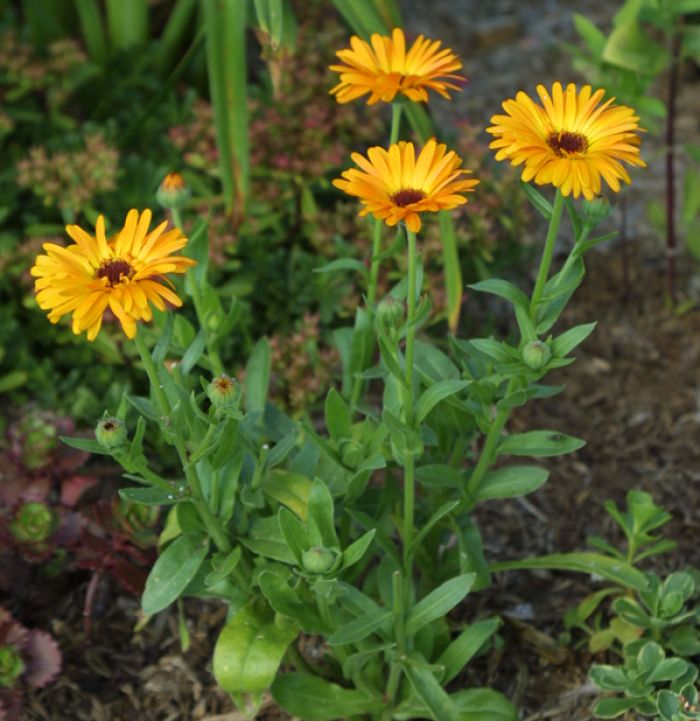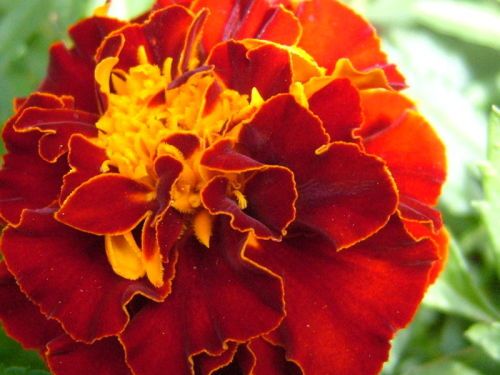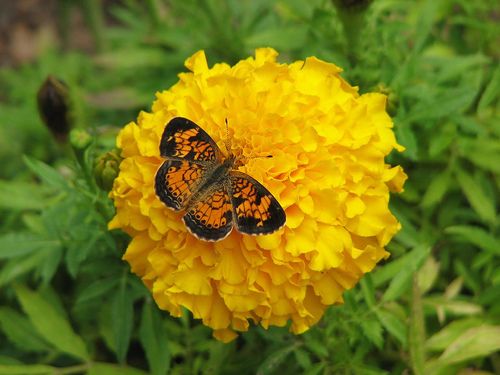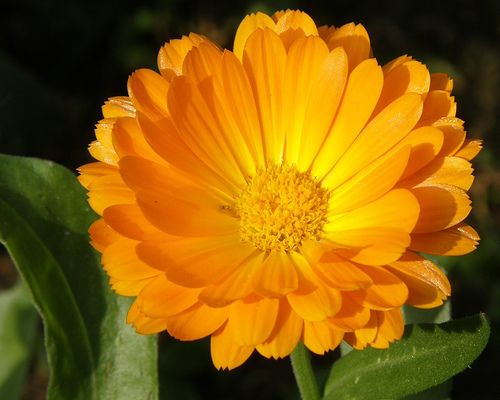
I know what you’re thinking. Why would anyone describe marigolds as magnificent? They’re probably the most commonly planted annual in the world. They’re hands-down the easiest flower to grow and odds are, they’re the very first seed you planted successfully as a child.
Nature does the coolest things. How fantastic that this simple-to-grow flower can also be one of the most adaptable, versatile and incredibly useful plants anywhere? Even gathering their seed heads at the end of the season is a picnic – my kids have done it for me for years.
If you haven’t heard of all the wonderful attributes of marigolds, stick around – I have a whole list here. Not to confuse the issue, but there are a couple of species and several varieties of marigold that are gossip-worthy.
An important trait that belongs to all of the marigolds is the capability of luring beneficial insects to the garden due to abundant pollen and nectar. Marigolds attract the pollinators such as bees and butterflies which we need to have our vegetables and fruit. Each one of them is so easy to grow that there isn’t much of a gamble when you plant them directly in the garden bed.
In general, all marigolds adapt well to sub-par soils. While most gardeners are always striving to improve their garden beds, marigolds are going to grow – regardless. I love that about them. All types of marigolds are excellent as cut flowers as the blooms are long-lasting, and all of them bloom profusely. These things alone should have you already itching to pick up some seed packets.
French Marigolds (Tagetes patula)
French marigolds are my personal favorite in the garden. These are the guys with the pompom-type heads (some have single rows of flowers) and the fernish leaves. The French guys bring a little something extra to the proverbial table. They produce a nematode-repelling substance that protects both vegetable as well as ornamental plants. Nematodes (or eelworms) are worm-like creatures that either suck the juices from the roots and leaves of plants or make knots in the roots causing stunted growth or death.
This type of marigold is often used as a cover crop to treat an area that has severe nematode problems. A gardener might plant French marigolds en masse in a garden bed which they plan on growing carrots in the following year to clear the bed of nematodes before the crop is planted.
African Marigolds (Tagetes erecta)
The taller variety often grown is the African native, Tagetes erecta. Hybridizing of the marigold varieties has created a tremendous array of cultivars that can have all kinds of characteristics. While T. erecta doesn’t offer the nematode defense system of T. patula, as long as there is a strong scent, they can offer another source of defense in the garden. Any marigold variety that has the pungent marigold trademark will work as a pest repellant by masking the delicious scent of vegetables that are irresistible to insect pests.
Often insect pests will pass by your food crops thanks to the marigold’s bold odor. Plant Tagetes spp. on the outer borders of your vegetable garden beds, in between the veggie rows, or in a flower border.
Pot Marigold (Calendula officinalis)
Pot marigolds are altogether a different-looking plant than the previous species. These guys are native to the Mediterranean and are usually larger in flower and plant size (although, there are dwarf varieties). They have daisy-like flower heads and long, narrow leaves instead of the fern type ones of Tagetes.
Calendula is called pot marigold after the fact that they have been traditionally used for the stew-pot. That’s right – you can eat marigolds, too. A couple of tasty favorites are ‘Lemon Gem’ and ‘Tangerine Gem’.
Any kind of marigold you choose can be planted to disguise spent bulb foliage or to quickly fill in gaps between seasonal perennials. If all of these marigold facts still haven’t convinced you of its magnificence, you should know that are they’re also generally shunned by rabbits and deer alike.






















Comments
Log in or create an account to post a comment.
Sign up Log in